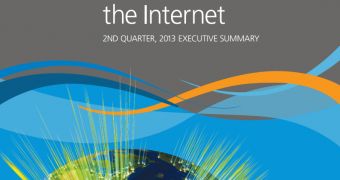Akamai has released its “State of the Internet” report for the second quarter of 2013. The study focuses on attacks launched by the Syrian Electronic Army, Internet disruptions, the state of IPv4 exhaustion and IPv6 adoption, and mobile connectivity.
As far as attack traffic is concerned, Akamai recorded such traffic as originating from 175 countries and regions. The number has decreased by two compared to the previous quarter of 2013.
Interestingly, Indonesia was responsible for most of the attack traffic (38%), followed by China (33%), and the United States (6.9%).
When it comes to the most targeted ports, for the first time since the beginning of 2008, Port 445 was not the most targeted. During Q2 2013, the most targeted ports were Port 80 (24%) and Port 443 (17%). Port 445 occupied the third position at 15%.
Akamai’s customers reported being hit by 318 distributed denial-of-service (DDOS) attacks. This represents a 54% increase compared to the previous quarter. The most targeted sector was the enterprise sector with 134 of the attacks aimed at it.
Usually, Akamai’s State of the Internet focuses on the attacks of Izz ad-Din al-Qassam Cyber Fighters. However, since the group has been quiet over the past months, the latest report analyzes a couple of attacks launched by the Syrian Electronic Army.
“The Second Quarter, 2013 State of the Internet Report notes some significant milestones and trends, including the fact that half of all connections to Akamai occurred at speeds of 4 Mbps or higher, a 25 percent increase since the first quarter of 2012,” noted David Belson, the report's editor.
“We also saw a decline in the number of countries/regions with average connection speeds of 1 Mbps or less - down to 11 from 14 in the last quarter - likely indicative of improved broadband connectivity across some of the slowest geographies. These positive trends bode well for the continued increase and adoption of broadband connectivity around the world.”
The complete “State of the Internet” report is available on Akamai’s website.

 14 DAY TRIAL //
14 DAY TRIAL //